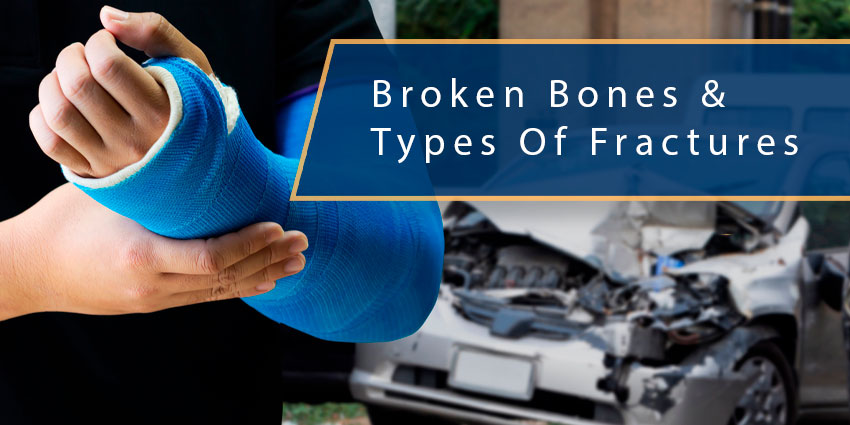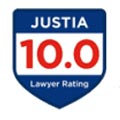In a severe crash, someone might sustain broken bones or some other type of fracture. The extent of the injury will depend on how fast the car was going at the time of the collision. It will also depend on whether or not you were wearing a seatbelt. The seatbelt can be a blessing and a curse in a high-speed crash. While it can save a person’s life, the force of a collision can cause seat belt trauma, sometimes resulting in broken ribs or a broken collarbone.
Some of the most common types of injuries car accident victims suffer are broken bones and fractures. With over 200 bones in our bodies, fractures can happen virtually anywhere. Broken bones and fractures are interchangeable terms for the same injury.
The most important thing to do after any car accident is to seek prompt medical attention. That way, you can ensure your well-being and prevent any injuries from worsening.
Table of Contents
What Causes Broken Bones in a Car Accident?
There are several different ways crash victims can sustain broken bones. Depending on the force of the collision, a person could suffer minor fractures to completely broken bones. Here are some of the ways an injury victim might end up with broken bones from a motor vehicle collision:
- Failure to wear a seatbelt and getting ejected from the car
- Flying off of a motorcycle and hitting/skidding across the pavement
- Colliding with a large commercial vehicle like a semi-truck or tractor-trailer, sometimes getting crushed under the truck.
- The impact of airbags deploying, which often causes facial fractures
- Getting struck by loose flying objects in the car
- Slamming into the steering wheel
- Or from the seatbelt bracing and crushing you during the crash
Common Broken Bones Seen in Car Accidents
With so many bones in the body, it’s possible to get an injury virtually anywhere in an accident. But, some injuries are more common after a car accident. Here are some of the most common types of broken bones or fractures in a car crash.
Humerus, Radius, and Ulna (Arm Bone) Fractures
There are three primary bones in the arm:
- The humerus (upper arm)
- The radius and ulna (lower arm)
People instinctively try to protect themselves in a collision by reaching out in front of their faces. Unfortunately, this can lead to broken or fractured arm bones.
Wrist Fractures
The wrist is made up of many small bones that can break easily. Similar to arm fractures, wrist fractures occur when people try to brace themselves and get crushed by the crash impact. Wrist bones are particularly fragile since they are so small, but they heal faster than other fractures.
Tibia and Fibula (Lower Leg) Fractures
The tibia and fibula are the bones of the lower leg. Lower leg bones are susceptible to break or fracture, especially in motorcycle accidents. Additionally, if the vehicle caves in and traps the leg in a car accident, that can cause a break or fracture. Broken leg bones typically heal with a cast, but severe cases might require surgery and physical rehabilitation.
Broken or Fractured Femur Bone
The femur bone is the largest and strongest bone in the body. It runs from the knee to the pelvis. In serious wrecks, the femur bone can get broken from the impact. Broken femur bones typically take longer to heal than other bones.
Collarbone and Clavicle Fractures
Broken collarbones are a common car crash injury, commonly caused by seat belts. Unfortunately, while the seatbelt may have saved your life, it could have also broken your collarbone.
The collar bone connects from the shoulder to the upper part of the breastbone. That makes it a prime location for a seatbelt injury in a collision. Furthermore, the collarbone (or clavicle) cannot be put in a cast due to its location. Rather, you might have your arm in a cast to prevent overuse in that area and physical therapy to facilitate the healing process.
Rib Fractures
Rib fractures are also common from seat belt trauma. In addition to the seatbelts, the airbags and steering wheel are common culprits that cause broken ribs. Similar to the collarbone, you can’t put a cast on the ribs. Consequently, resting and avoiding use that puts strain on the ribs is the only way to heal broken rib bones.
Back and Spinal Cord Injuries
Fractures in the vertebrae are common injuries that occur from vehicle collisions. They typically heal with a back brace and rest. However, untreated back injuries can worsen and become a chronic condition. Therefore, it’s best to get medical attention immediately to avoid extreme measures like surgery or chronic pain.
Hip Fractures
The hip joint runs through the thigh bone and up to the pelvis. Hip fractures are complex injuries that sometimes require surgery to hold the bones in place. In addition, physical therapy is often necessary to help injury victims regain mobility in their hips.
Pelvic Fractures
Pelvic fractures involve damage to any bony structures of the pelvis (hip bones, sacrum, or coccyx). They commonly occur in motorcycle accidents but can also happen in car accidents. Pelvic fractures generally don’t allow the injury victim to walk, sit, or move comfortably and require substantial rest. You might also need physical therapy to recover from a pelvic fracture.
Skull and Face Bone Fractures
Skull and facial fractures happen when vehicle occupants don’t wear a seatbelt and hit the windshield. In severe cases, skull fractures can cause brain damage or other complications requiring immediate medical intervention.
Different Types of Fractures
Fractures can happen in various ways and have different levels of severity. Here are some of the most common types of fractures that result from a car crash:
Avulsions
Avulsions are a type of fracture where your bone disconnects from the ligaments and tendons. Avulsions usually require surgery.
Bone Buckle or Bend
Bone Buckles are common injuries in young children since their bones are still growing and more malleable. Rather than their bones breaking, the bones bend or “buckle.”
Comminuted Fractures
Any injury where the bone breaks into more than three pieces. Comminuted fractures require immense force and usually require limb amputation.
Compound Fractures
Compound fractures occur when a broken bone protrudes out of the skin. They require immediate medical intervention and antibiotic treatment to prevent infection through the wound.
Hairline Fractures
Also known as stress fractures, hairline fractures are small cracks or severe bruises in the bone. Hairline fractures could be so small that you don’t feel any pain. Additionally, People with osteoporosis are more prone to hairline fractures than those with healthy bones.
Oblique Fractures
Oblique fractures occur when the bone breaks at an angle. For example, a hit or a fall at an angle usually causes oblique fractures. The break happens diagonally across the width of the bone. Injury victims usually need to rest, elevate, and immobilize the bone for six to twelve weeks. While these bones can self-heal, it’s still imperative to get medical treatment for them.
Stress Fractures
Similar to hairline fractures, stress fractures are tiny cracks in a bone. Stress fractures require rest and time to heal.
Transverse Fractures
When a bone breaks perpendicular to its length, it is a transverse fracture. The fracture pattern is typically a straight line running in the opposite direction of the bone. Car, motorcycle, and pedestrian accidents are common causes of transverse fractures. Furthermore, transverse fractures often occur with other injuries (about 35% of the time). Common comorbidities include injury to the following internal organs:
- Liver
- Spleen
- Diaphragm
- genitourinary system (torn ureter)
Any injury victims who experience abdominal, bladder, or bowel pain should seek urgent medical attention.
How Do I Know if I Have a Broken Bone After a Car Accident?
A medical professional can do the appropriate testing and diagnosis for broken bones. Then, they will prescribe a custom treatment plan depending on the type and severity of your injury.
If you think you have a broken bone, your doctor may ask you some questions to assess your injury. Some common symptoms of broken bones include:
- A bone sticking out of the skin
- Inflammation and swelling at the injury site
- Bruising
- Extreme deformity
- Excruciating pain
- Trouble putting weight on the area
- Inability to move an area (for example: unable to bend the arm)
If it seems like you have a broken bone, your doctor might order an X-ray or CT scan.
Are Broken Bones and Fractures a Medical Emergency?
Yes. While broken bones are not life-threatening injuries, they require immediate medical treatment. Even if you think you are not severely injured, it’s best to get immediate medical attention. Some injuries won’t show up or have symptoms until later. Delaying medical treatment could interfere with your accident claim and make it difficult to get the compensation you need.
Contact a Florida Personal Injury Lawyer Today and Get Your Bills Paid
Even if you’re able to get up and walk away from an accident, contact an experienced Florida personal injury Lawyer. Getting your bills handled is usually the most important concern after a broken bone. If you need surgery, there are doctors who we work with that can negotiate the bills or charge them against your injury claim. Getting us hired quickly can save you a lot of money in the end.
We offer a free initial case review, so you have nothing to lose by calling us today.














